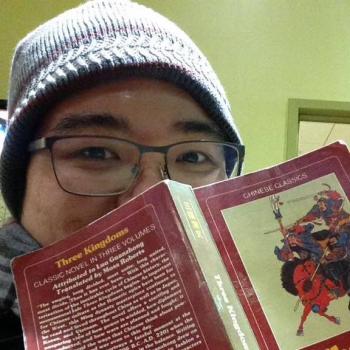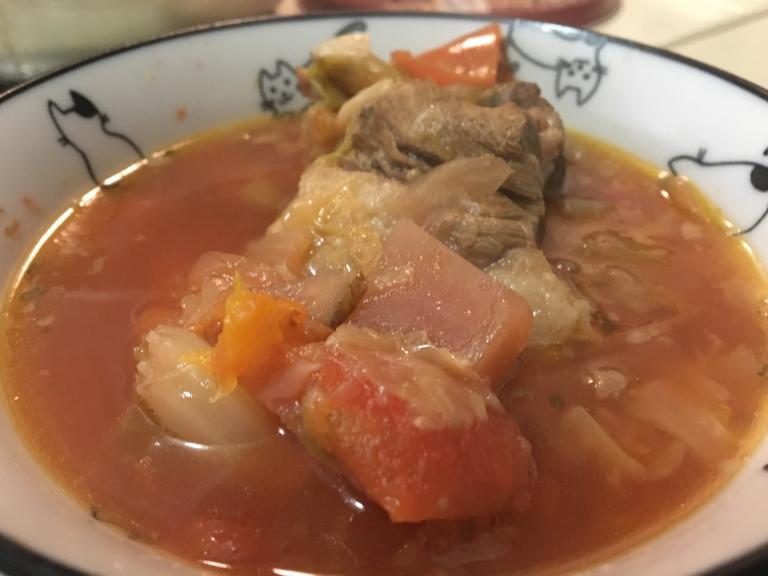
I was around nine when the first Hong Kong tea café in the Fremont-Union City-Newark ‘tri-city’ area opened up. My mom was really excited. Until then, our meals out were at traditional Cantonese restaurants, often served family style. When I was small, my mom had told me about these places in Hong Kong that were known as ‘tea cafés,’ and they served Hong Kong-style European food: baked pork chop rice, mixed grilled steaks of beef and chicken, scrambled egg shrimp, pineapple buns with slabs of butter in the middle, and so on and so forth. The opening of the Venus Bakery made the stuff of dreams emerge into reality. Suddenly, all those foods became ever-present in my life. And so begins the story of how the soup called borscht came into my life.
The Cantonese for borscht sounded nothing like how it was advertised, which was Russian borscht. In Cantonese, it sounds more like ‘soup with side dishes,’ which I took to refer to what was in it: tomatoes, potatoes, cabbage, onions, beef stew. It was also a little spicy. I confess that I didn’t like it much at first. But slowly my spice tolerance adjusted, and it became the soup of choice for me. I learned later on that it is the soup of choice for everyone who frequents Hong Kong tea cafés, whether or not one can actually speak Cantonese. My Irish Protestant godfather, the guy who sponsored me into the Anglican Communion, swore by it to get over a cold. My wife and I are always on the hunt for good borscht throughout our ethnoburb of Richmond in Vancouver — at 55% Chinese, it really can feel like a Chinese suburb, problems with that designation notwithstanding — and we have our secret haunts all worked out.
The trouble, of course, is that the people who came up with the word borscht would never recognize it as such. I still remember the first time I looked up the recipe to impress my then-fiancée and was weirded out by the usage of beets and the seeming absence of tomatoes, much less beef stew. The result wasn’t very good then, but the good thing is that she still married me. Since then, she has endured my becoming Eastern Catholic in the Kyivan Church, which means that we have now had occasion to try all kinds of borscht, not just the Hong Kong kind. Sometimes, the stuff we eat even has beets in it. Occasionally, it has cabbage too.
Hong Kong borscht has recently made the airwaves online, with its history of Russian and Ukrainian emigration to Shanghai and Hong Kong after the communist revolutions of the early twentieth century literally steeped into the soup. I will not rehearse the history, except to note that I’ve written about my strange relationship with it as well. The only thing I’ll say about it is that while there may not have been beets in Shanghai and Hong Kong when the new culinary concoction was being developed, they are accessible in Richmond. Because of this, I decided to further develop the tradition: incorporating beets back into a Hong Kong borscht, with an ox-tail soup base.
Oxtail is a special ingredient for me. When we lived in the United States, my father used to make an ox-tail soup every American Thanksgiving. Really, it was the same idea as borscht — his soup had cabbage, onions, carrots, and such in it, and he would make it in a giant stockpot. In many ways, that was the staple of our Thanksgiving dinners, in addition to the ham that we had because my Shanghainese grandfather could always be counted upon to complain if turkey were involved. Of course, the ham bone would also later be transformed into congee, the rice soup for which we Cantonese are famous. My wife and I went on a scavenger hunt through Richmond trying to find ox-tail, in addition to our more simple ingredients that we bought from local grocers. It was more expensive than we thought, but we eventually found a relatively good deal at a Chinese butcher. Next time, we’ll probably use stewing beef, but this time, we are also celebrating some personal milestones, so we decided to splurge. As I prepared the ox-tail soup, I couldn’t help but think that I was continuing a kind of family tradition of celebrating with this cut of beef. Maybe, I thought, I was really coming out of my extended adolescence and becoming a man after all.
Perhaps this post will turn out to have theological insights, or maybe it will not. I will note that my two favourite books of theory, Michel de Certeau’s Practice of Everyday Life and Robert Farrar Capon’s Supper of the Lamb, are basically theological cookbooks, and far from missing out, Slavoj Žižek has also recently shared his pasta recipe for global revolution. Soup, however, really is the stock of the scholarship of everyday life, the stuff that bears witness to an attentiveness to the mystery of the material of the world. I don’t know what my soup tonight has to say about such lofty matters, though. All I know is that it turned out really well, and my sisters and brothers whom I informed about it asked me to deliver it in blog form for their future reference, so here it is.
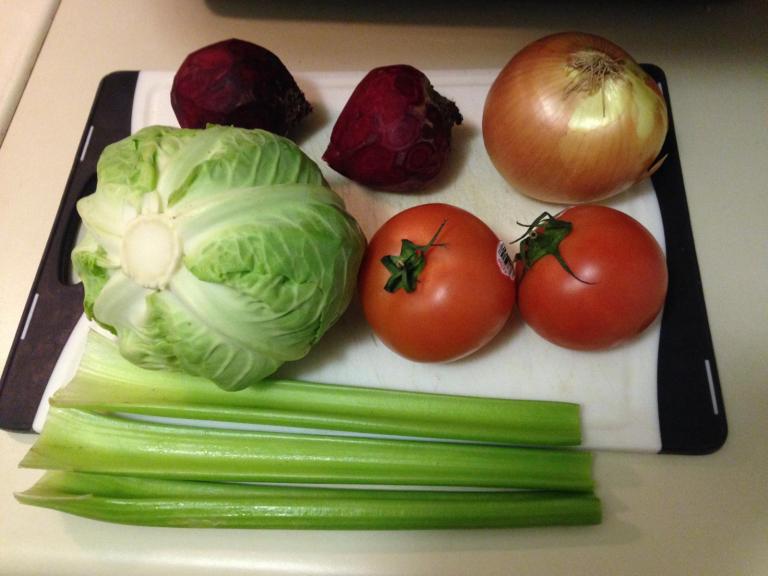
Ingredients
- 2 pounds of ox-tail
- 3 beets
- 1 onion (2, if you like)
- 2 tomatoes (3, if you like, and you can have potatoes too — I decided to forgo them this time). Some recipes also call for tomato paste, to which I say, whatever.
- 3 stalks of celery (or more, if you like, and you can have carrots too — we went without this time)
- a head of cabbage (the wife dissuaded me from buying a gigantic napa cabbage, but I have used those before too)
- Garlic (I used about five cloves) and spices to taste (I used paprika and parsley, and the latter can be fresh too, if only I had remembered it) and bay leaves (4ish)
How I did it
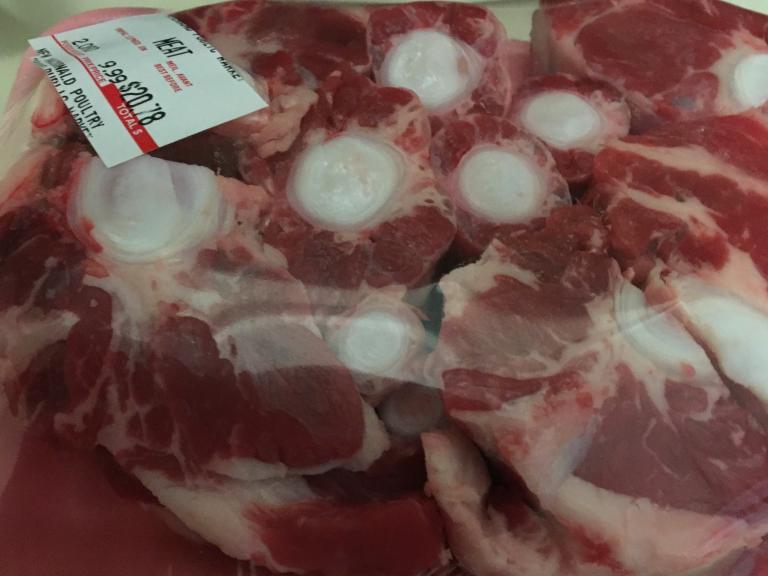
The first thing to do is to prepare the ox-tail, which I bought fresh from the butcher.
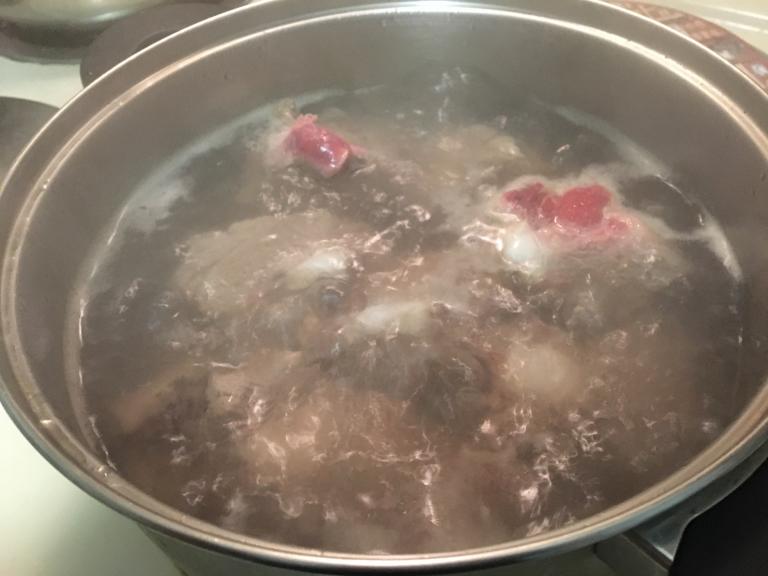
I decided to do it Cantonese-style, which is to blanch it. Boil the ox-tail for about two minutes. All the impurities come to the surface.
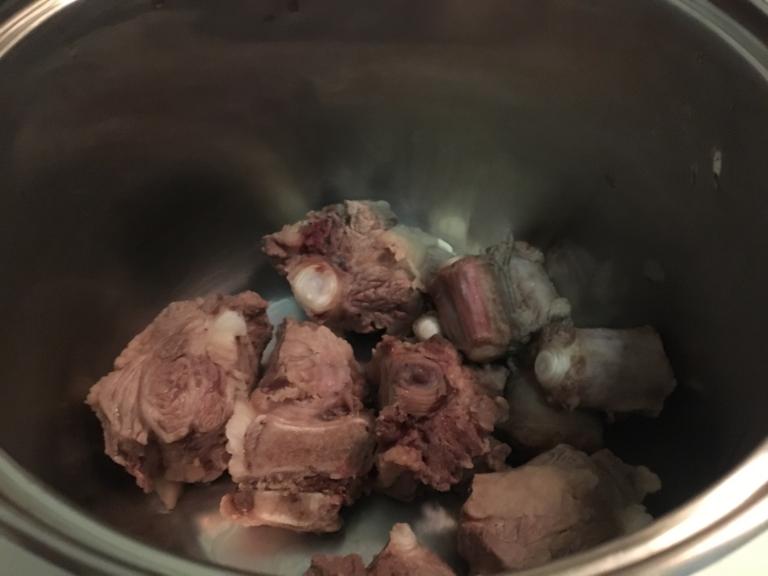
Then I transferred it to another pot. And then the real work began…
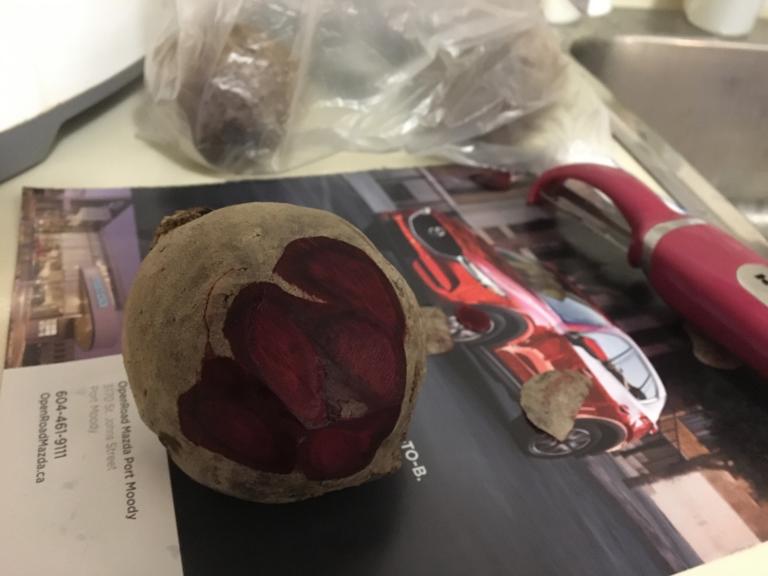
Peel the beets. I did it on a newspaper that I then composted. Remember to wash the peeled beets, especially if you do it on a newspaper, or else you eat the print of the day too.
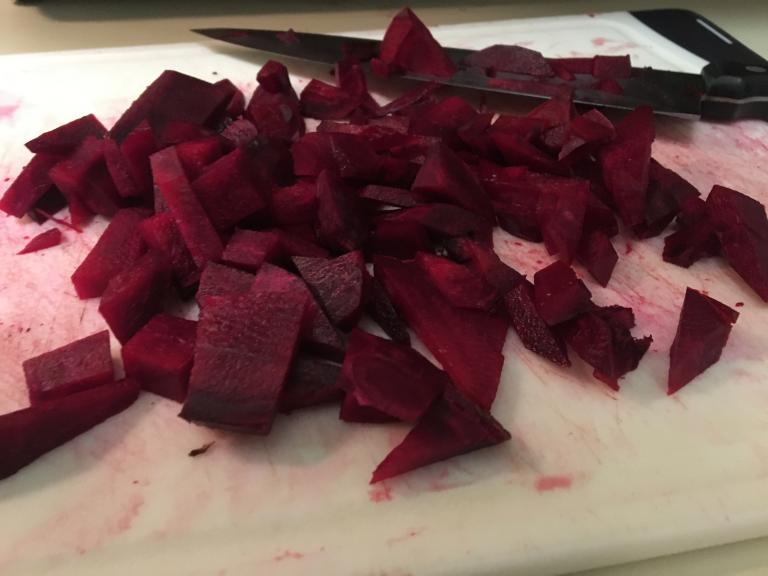
Cut them, but not violently, or else your kitchen will look like a scene from a Justice Pao execution.
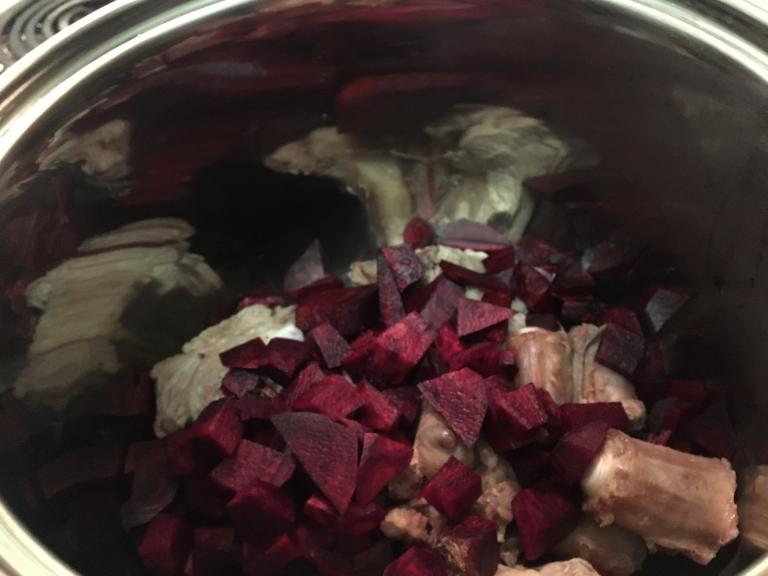
Put it in with the oxtail.
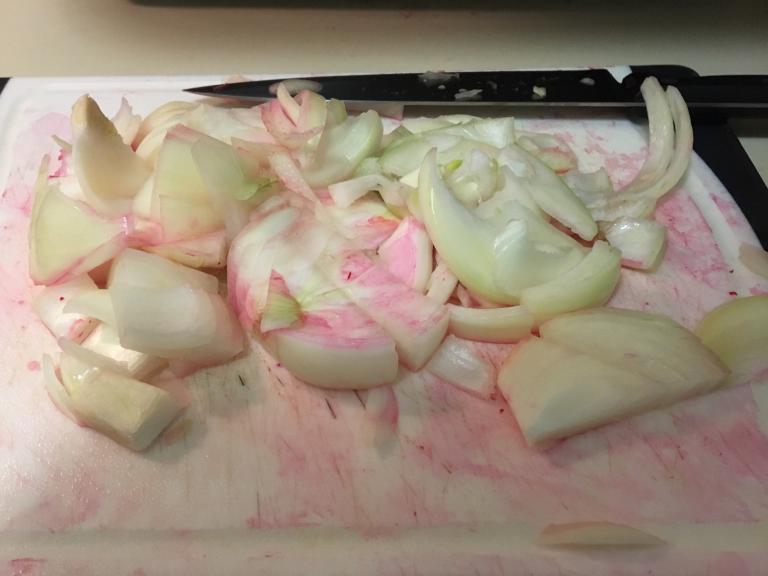
Peel, wash, and chop onion. If you would like to do this meditatively as you shed tears of joy, consult the onion dissection chapter (I believe it is the second) in Capon’s Supper of the Lamb.
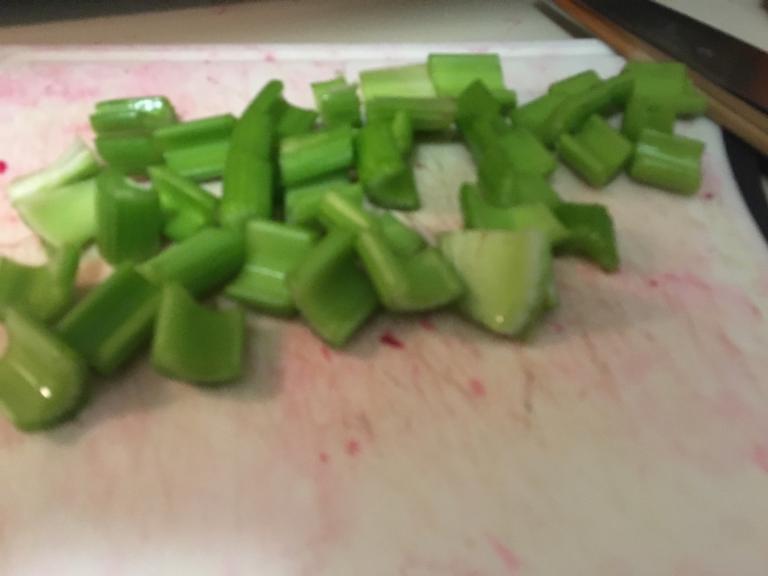
Ditto with celery and tomatoes (and carrots, if you have them, and potatoes too, I guess).
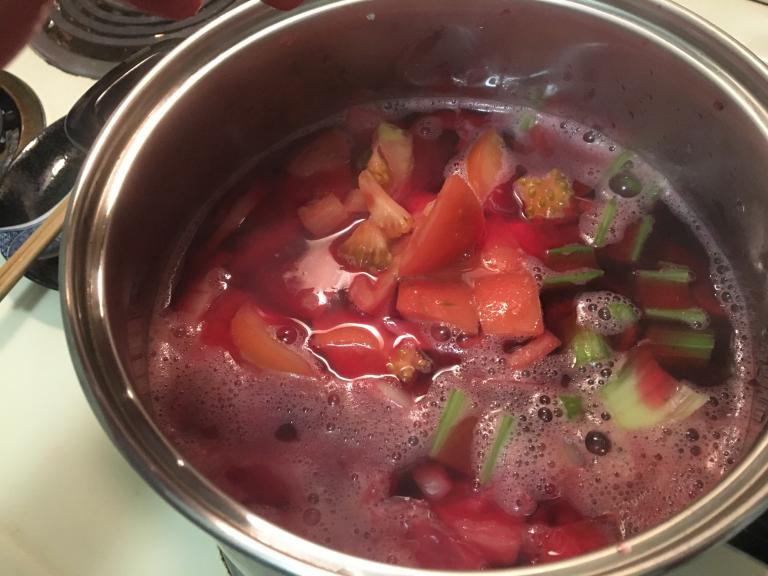
Put it all in.
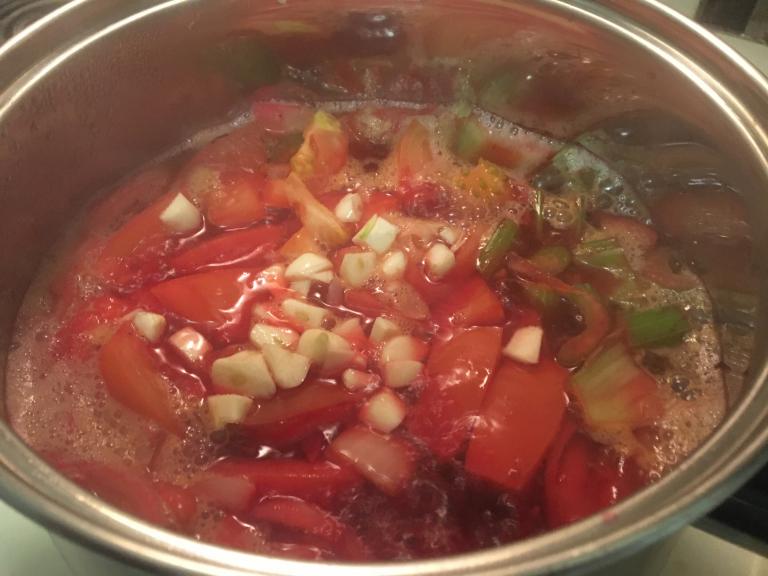
Add garlic, paprika, parsley, and bay leaves.
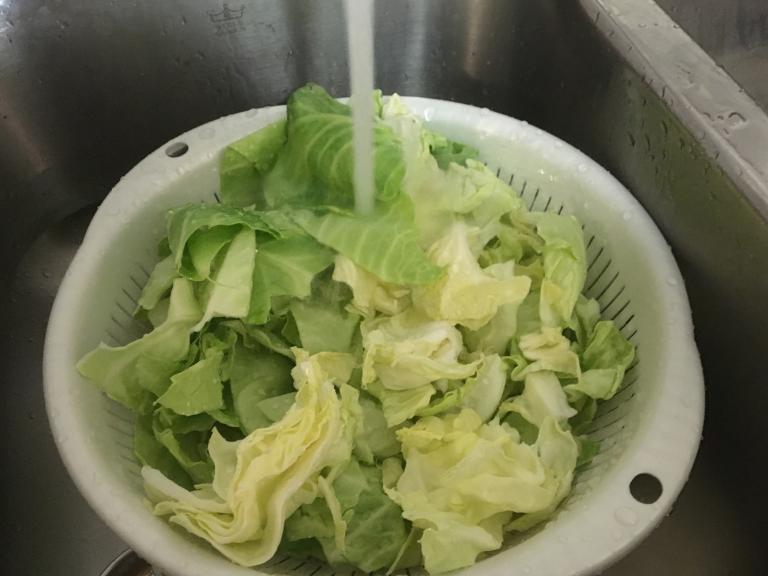
Wash cabbage.
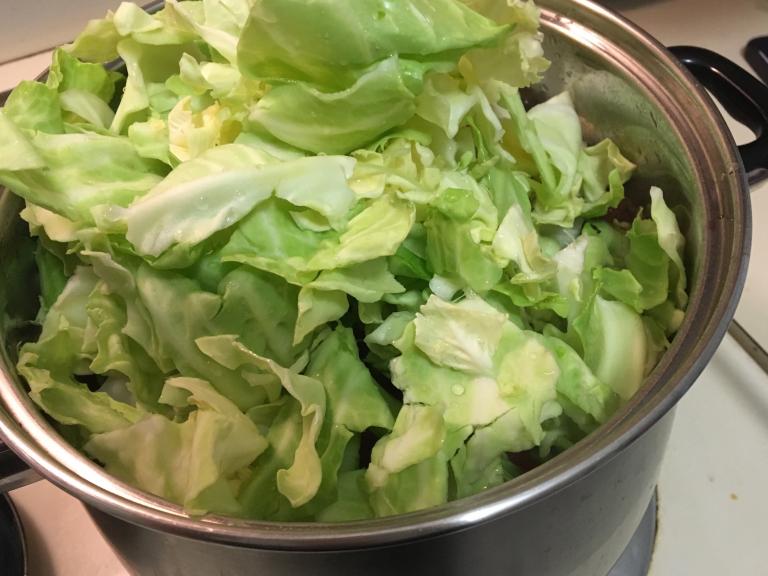
Smush the pot down with the washed cabbage pieces.
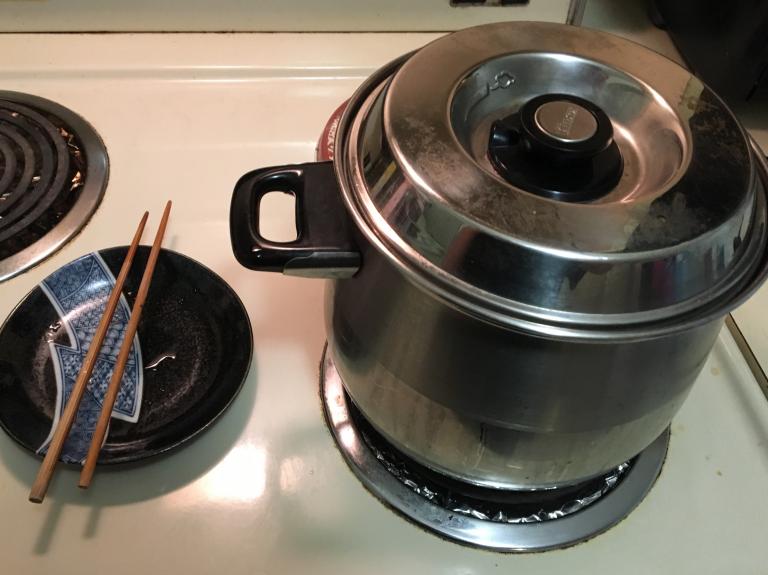
Cover the pot. Fill about three-quarters with water. Bring to a boil on medium heat. (And here you see a Cantonese cooking trick, which is probably universal: I’ve got my cooking chopsticks, which should always be wooden — as I don’t like eating plastic or ruining higher quality ones — on a side plate.)
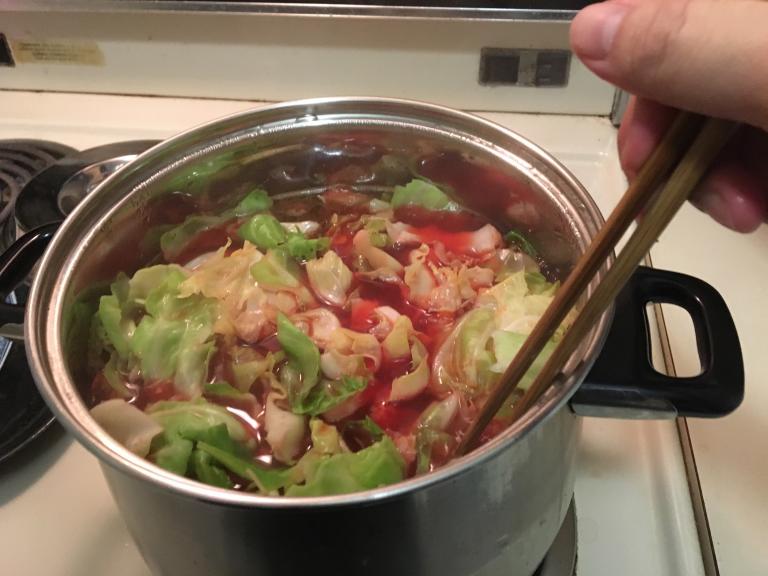
The cabbage melts down. Push it in with your chopsticks.
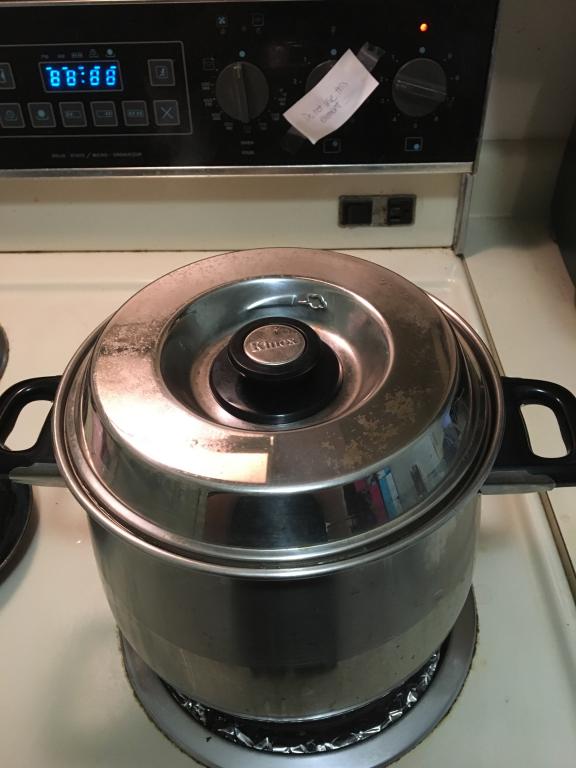
Cover. If it’s at a boil, bring it down to a simmer on low heat.
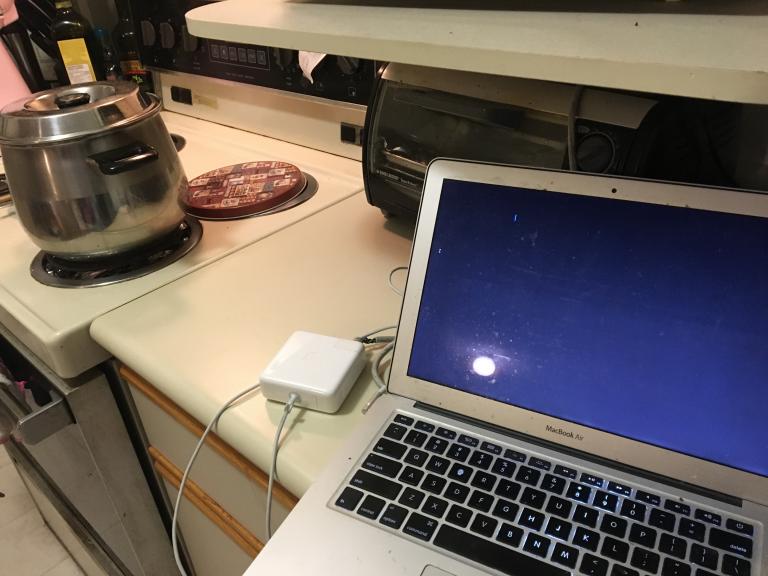
This is the part where you wait. We did two hours. I turned the counter into an academic work station.
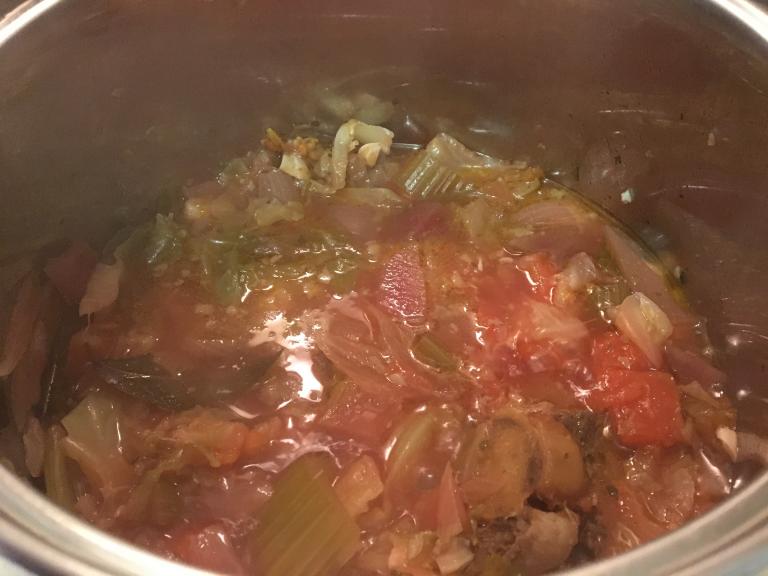
The result. Scoop out and enjoy.
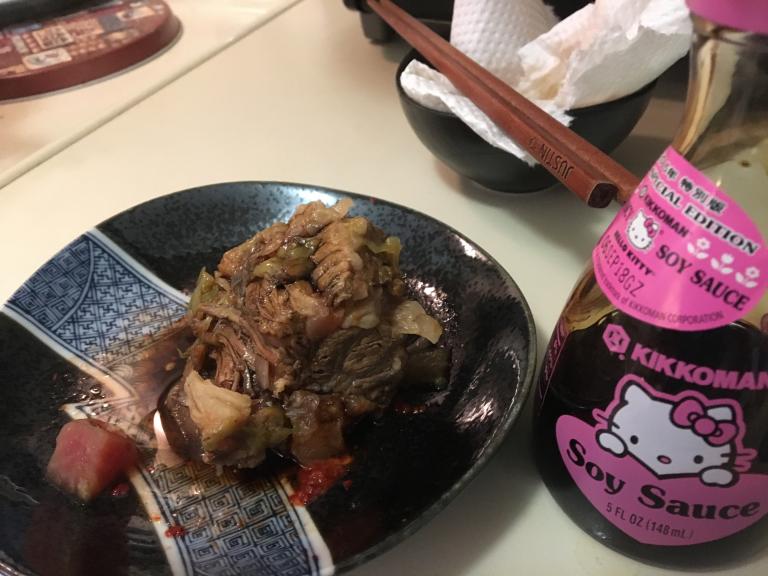
The ox-tail, which should be tender at this point, can be enjoyed on a side plate with soy sauce. I used this plate to hold kimchi while waiting. I do not have to be Korean to like kimchi. Like Cantonese broth and Ukrainian borscht, kimchi is universal. Combined with the soy sauce, it made an incredible dip for the tail.

And now we can feast for the next three days! I love this fast-free season of Nativity! Christ is born! And the people said: Let us glorify him!










